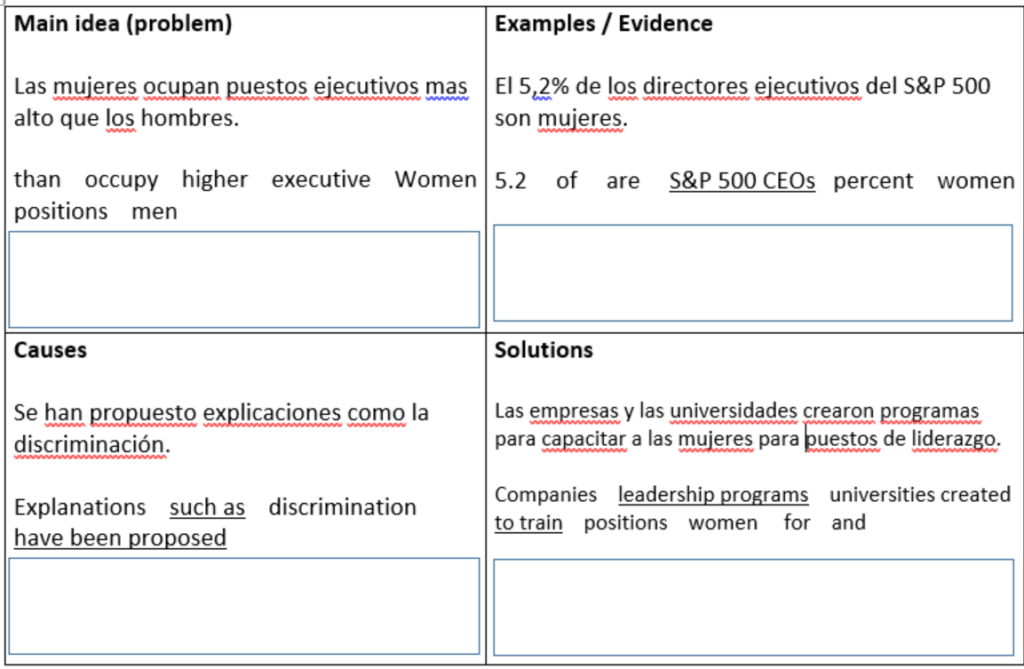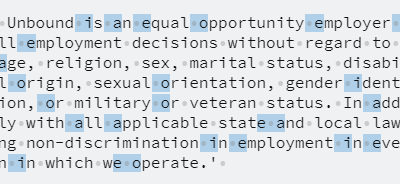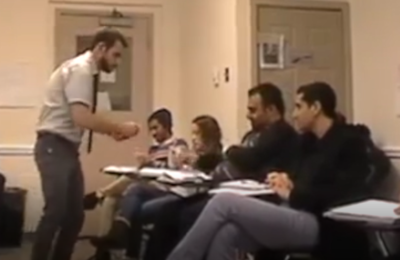Background:
Recently I’ve had a number of “newcomer” students who are just beginning to learn English. In contrast with the “long-term ELLs” I mostly teach now, these students attended middle school in the US, but unfortunately were in a “bilingual” program that decided to educate them entirely in Spanish. I guess their previous teachers took the easier route and just decided to make content comprehensible by translating everything to their L1. No so good.
Anyway, I’ve had success with a strategy I tried recently and wanted to share. I call it the “translated sentence scramble.” For students who can’t produce virtually any written or spoken English but may have been exposed to English for some years and are in the “silent phase,” this method allows them to express themselves without hindrance using their L1, but also gain practice in the L2.
Rather than allowing their minimal English ability to limit what they can communicate, this method takes away the limitations by relying on the L1, but uses machine translation and a sentence scramble task to support L2 acquisition.
Benefits:
- The use of translation ensures the learner can first write in the L1, making the task more personal to them (as opposed to a sentence scramble task that involves random sentences), and the sentence scramble does two things:
- The sentence scramble task helps them draw parallels between words in the L1 and L2 (which can also help them recognize cognates).
- The sentence scramble also exposes them to L2 syntax and grammar in a context they are already familiar with (because they just wrote the same thing in their L1).
Finally, this task is very low prep when using the right online tools (Google Translate and a sentence scramble maker like this (printable) or this (drag-and-drop computer-based).
Here is an example of a sentence scramble translation task I made. Students were reading a short passage about gender representation in leadership positions. The Spanish below was written by the student, and the English sentence scramble was created by me. The boxes are where the student writes the unscrambled sentences in English.

How to plan and carry out the activity:
- First, have the student produce a short piece of writing on a given topic in their L1. The writing must be typed, so it can be pasted into Google Translate. In my case, I asked the student to write a self-introduction that had to include certain information such as a description of his family, culture, favorite food, favorite place, hobbies, and so on). The student wrote it in Spanish.
- Use Google Translate (or DeepL, or other) to translate the student’s writing into English. Check the translate for accuracy, grammar, and punctuation. Remember the student may not have full control of grammar or punctuation in their L1.
- After class, copy and paste each sentence of the English version into a sentence scramble maker to create the scrambles. Here is one that makes printable worksheets. Here is one that makes interactive drag-and-drop sentence scrambles. I prefer the printable one so I have a record of the student’s work.
- During the next lesson, give the student the sentence scramble task. For each sentence, they should reference their original L1 writing, then look at the scrambles sentence in English and try to write it out. For students whose L1 has similar syntax as English, it should not be too hard (they can usually recognize the subject, articles, any words that are cognates, prepositions, etc.)
- Bonus 1: The student reads their English sentences aloud. They just expressed themselves orally in English!
- Bonus 2: The student identifies key English vocabulary from the activity that they think are important to know. Then help them practice these words and put them on a quiz or make them responsible for learning these words. Because the words were written by them (in the L1 at first), they may be more motivated to learn them than if they were an impersonal, top-down list of words decided upon by the teacher or the textbook.
Some takeaways:
Because my student was a native Spanish speaker, he made the predictable error of reversing adjective and noun word order when writing his English sentences (e.g., a house very large). It opened up a conversation into English word order, and allowed this grammar point to be taught almost effortlessly. Because the grammar was taught in the context of his own sentences about his own life, it was interesting and memorable for him.
It can be quite rewarding for both the teacher and student to be able to read a set of sentences they produced in perfect English. The sentence scramble is a wonderful scaffold for students’ self-expression in English, as it allows for learner autonomy, personalization, and the use of the L1 to build confidence and promote communication and acquisition side by side.


